Brescia, world's two largest canvases by Giambattista Tiepolo return to view
Ten meters high by five meters wide and characterized by an extraordinary pictorial quality, the two monumental canvases by Giambattista Tiepolo (Venice, 1696 - Madrid, 1770) preserved on the side walls of the Chapel of the Blessed Sacrament in the Basilica of San Lorenzo in Verolanuova (Brescia) are finally back on view after restoration sponsored by the Brescia Community Foundation through the Fidanza Fund. The return of the Venetian master’s two largest canvases in the world to the community is celebrated by an initiative entitled Tiepolo in Verolanuova. Face to Face with the Two Restored Masterpieces, curated by Davide Dotti, with the collaboration of the Verolanuova Parish and the support of BPER Banca, Lic Packaging and inblu, which from February 25 to June 4, 2023, allows visitors to appreciate, for the first time, from a never-before-seen perspective and at close range, the refinement of the two paintings, following a path that takes them nine meters high, thanks to a structure built especially for the occasion.
Created around the mid-1840s on commission from the noble Gambara family, one of the most powerful and influential in Brescia, Tiepolo’s two works in Verolanuova are ten meters high by five meters wide and display a fervid creative composition, now visible again thanks to restoration work coordinated at the scientific and organizational level by Davide Dotti and carried out by the Abeni Guerra restoration studios of Brescia and Antonio Zaccaria of Bergamo under the direction of the Soprintendenza Archeologia, Belle Arti e Paesaggio for the provinces of Bergamo and Brescia.
The subjects - The Sacrifice of Melchizedek and The Falling of the Manna - recall the Eucharistic theme because of the presence of bread and wine - offered by Melchizedek, king and priest of Salem, the ancient name of Jerusalem, to Abraham - and manna, the “food of the angels,” descended by God’s will on the desert for the salvation of the Israelites after their exit and liberation from slavery in Egypt.
In the first painting, the scene, set at the edge of a forest, is airy and spatially expansive, although it is populated by numerous characters arranged along the outer sides. In the center of the pictorial field are the two main characters: Abraham, in military garb and with folded hands, kneels in prayer before Melchizedek, who raises a plate containing bread to heaven. Behind him is an altar on which rests a glass pitcher with red wine and bread that the priest will offer to Abraham. Attending the sacrifice are men in oriental costumes, women, children, soldiers, musicians and various animals. In the upper part of the composition, angels look out from the clouds to observe what is happening on earth; in the distance, surrounded by a glow of divine light, God the Father can be seen blessing leaning on the globe, a symbol of his power over the world.
In The Fall of the Manna, Moses, the protagonist of the Old Testament episode and recognizable by the horns of light on his head, towers in all his majesty from the rocky outcrop. Behind him can be seen a tent, inside which was perhaps kept the Ark of the Covenant. Other tents visible in the background are reminiscent of the long journey the Israelites were making in the Sin Desert, south of the Sinai Peninsula, to reach the promised land. Moses, spreading his arms wide, turns to the heavens to thank the angels who are dropping manna to feed the Hebrew people left without food who, in disbelief, scramble to gather it into plates, wineskins and baskets. Moses commanded his people to take manna according to each family’s need: only on the sixth day were they to gather twice as much because they would rest on the feast day.
The troubled preservation vicissitudes of the Verolanuova canvases are closely linked to two figures who have marked the Italian history of artistic heritage protection: Ettore Modigliani, historic director of the Brera Picture Gallery and Superintendent of Lombardy, and restorer Mauro Pellicioli. Modigliani in 1911 promoted the first restoration and lining of the two paintings, but already the following year it was necessary to redo the work. In 1918, to shelter them from the dangers of war, they were rolled onto a large wooden cylinder and given to Modigliani to be sheltered in Rome, in Palazzo Venezia. In 1920, upon their return to Verolanuova, a new restoration was carried out, supervised by Francesco Annoni and Mauro Pellicioli. In order to save the two works from the bombings of World War II, the paperwork for their transfer was again begun; however, the conflict ended before the long negotiations between the Curia of Brescia and the Fabbriceria of Verolanuova led to an agreement. In 1952 Pellicioli carried out a further restoration in the course of which the Sacrifice of Melchizedek was once again re-lined, while on the Fall of the Manna the operation of color transport was performed, that is, the transposition of the pictorial film from the original canvas to a new canvas. The traumatic intervention will definitively diverge the conservation future of the Fall of Manna from that of the Melchizedek Sacrifice, which, to date, is in a better state of preservation.
In addition to Tiepolo’s two masterpieces, the majestic basilica of San Lorenzo, whose construction dating back to August 10, 1633 was promoted by the noble Gambara family, which from the mid-14th centuryresse Verolanuova for more than five centuries, preserves other valuable altarpieces by Baroque painters such as Andrea Celesti, Pietro Liberi, Francesco Maffei, and Pietro Ricchi.
Accompanying the initiative Tiepolo in Verolanuova. Face to face with the two restored masterpieces a Silvana Editoriale book-catalogue.
The restoration of the paintings and their enhancement are part of a broader project of touristand cultural promotionof Verolanuova, through the schedule of events entitled “Tiepolo Scomposto” organized by the Municipality of Verolanuova and the proposal of an itinerary between the provinces of Bergamo and Brescia to discover the Tiepolo works "The Tiepolo way in the provinces of Brescia and Bergamo,“ which is part of the program of ”Bergamo Brescia Italian Capital of Culture 2023."
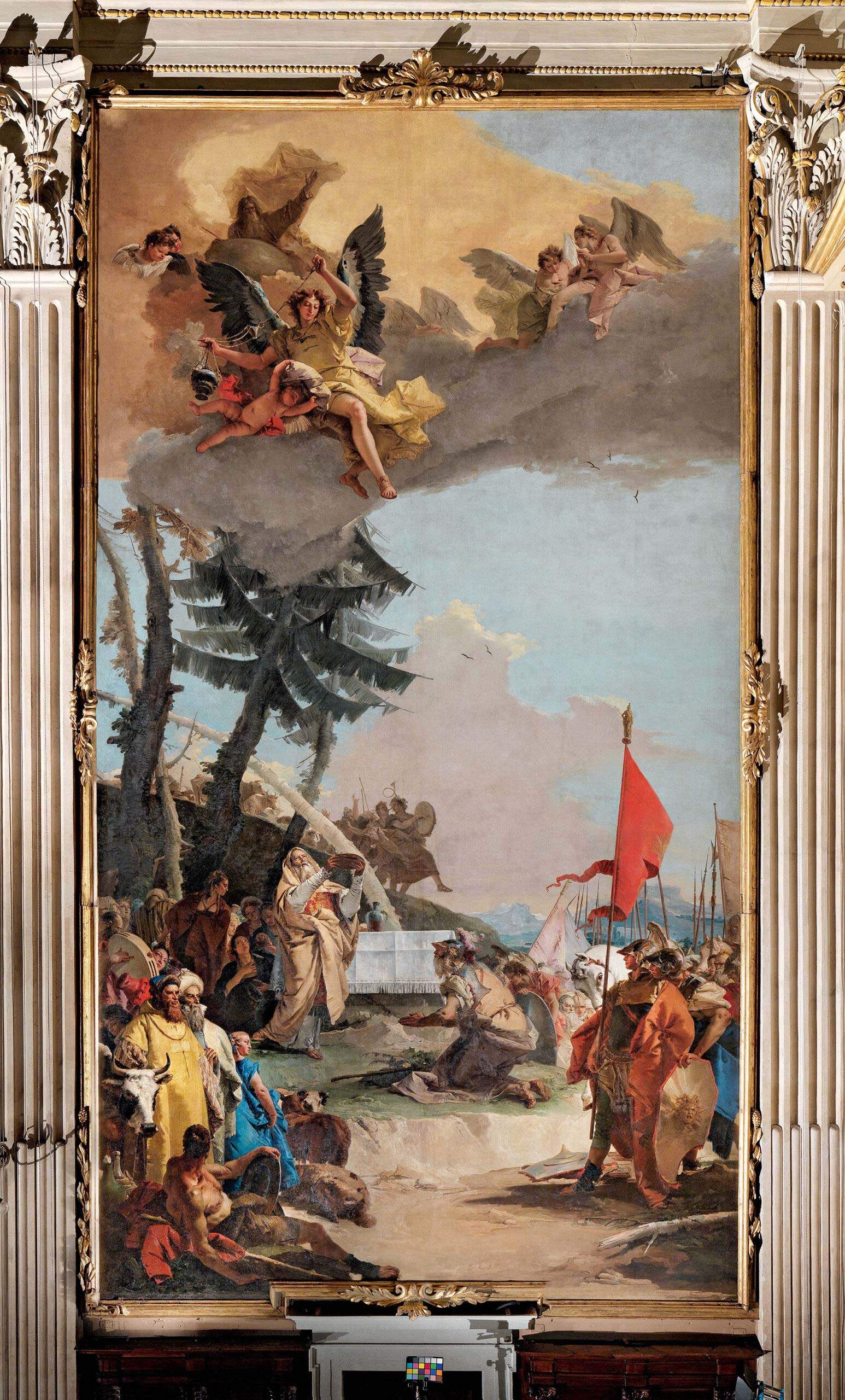
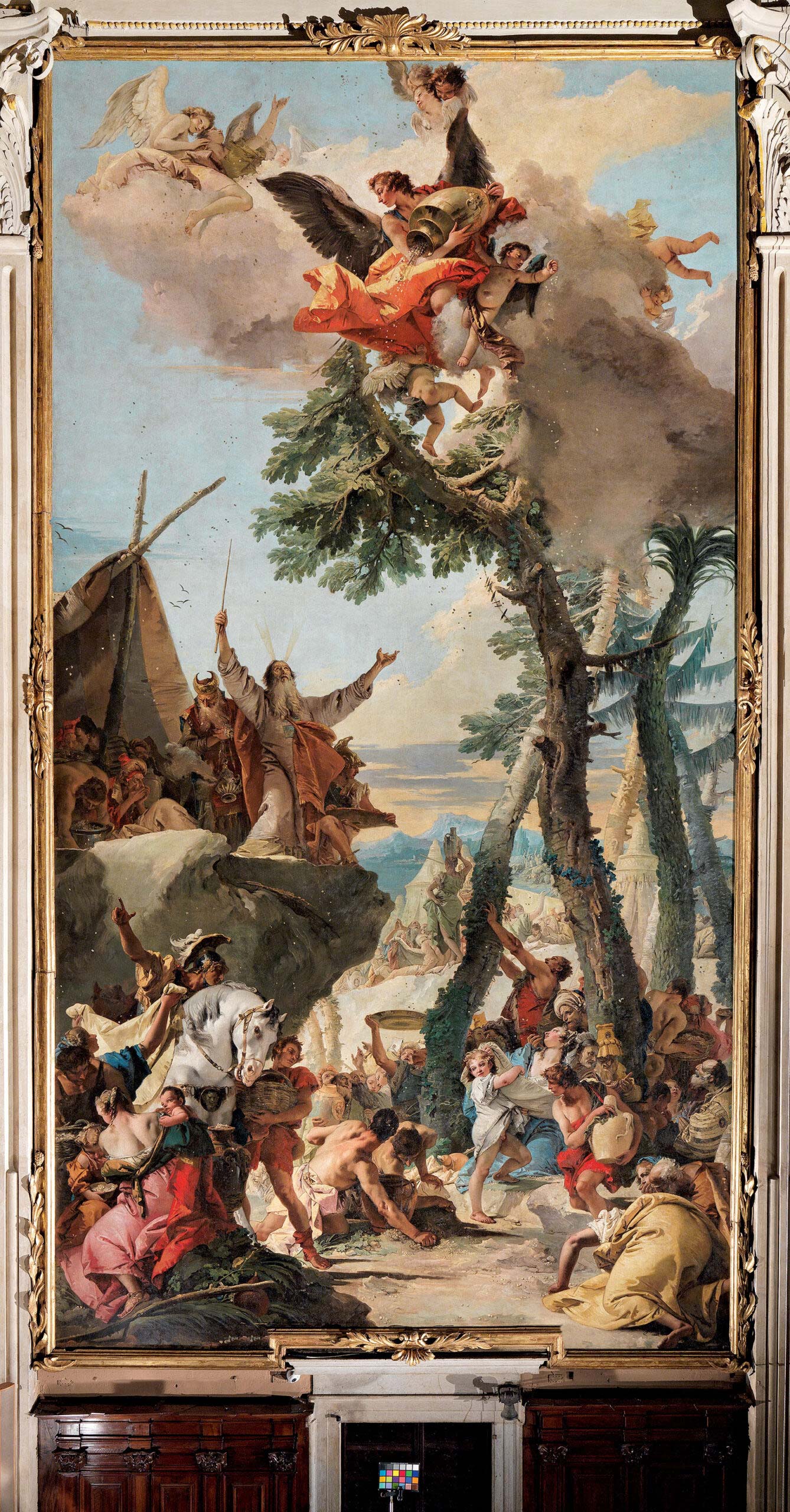 Giambattista Tiepolo
Giambattista Tiepolo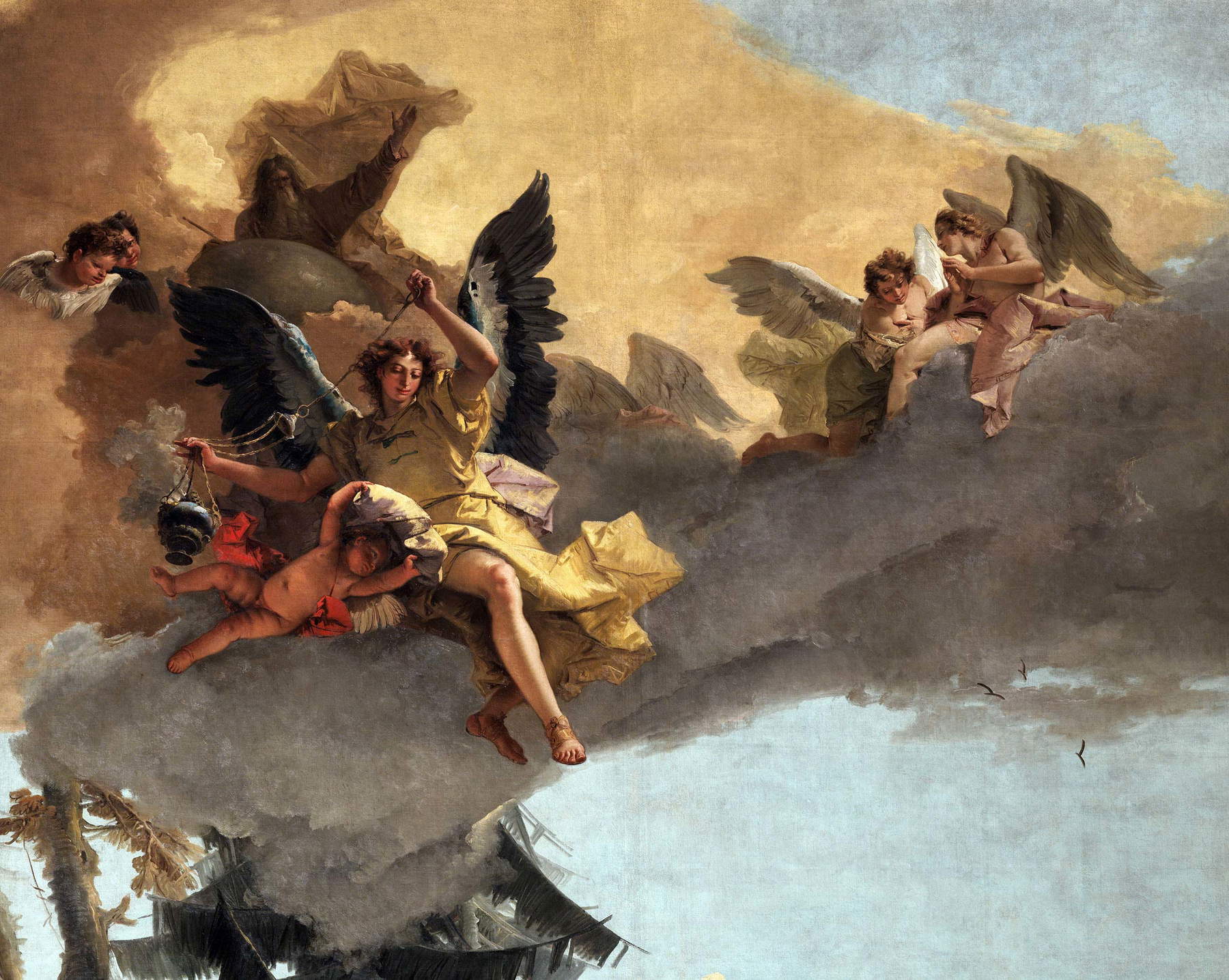 Giambattista Tiepolo
Giambattista Tiepolo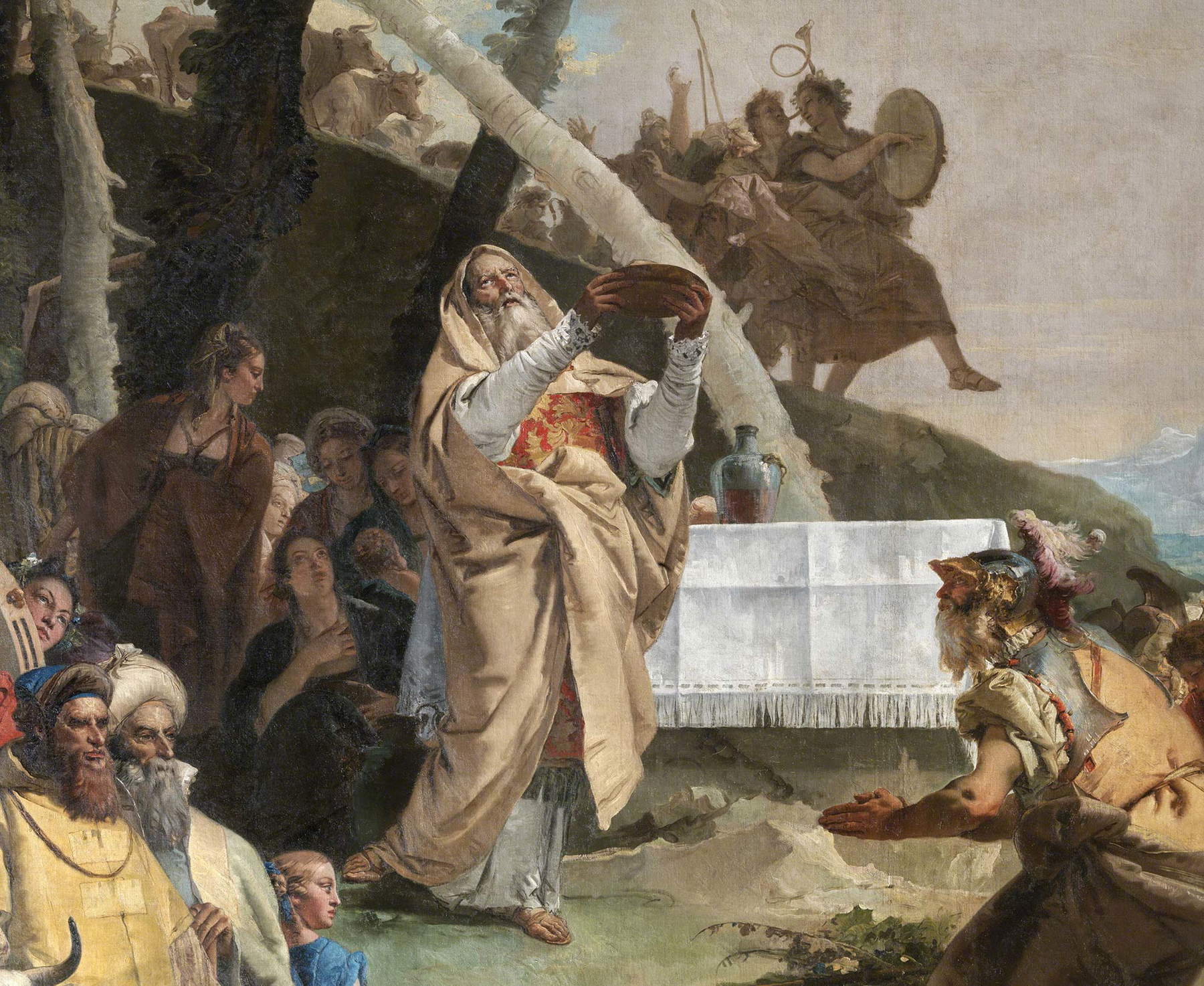 Giambattista Tiepolo, The Sacrifice
Giambattista Tiepolo, The Sacrifice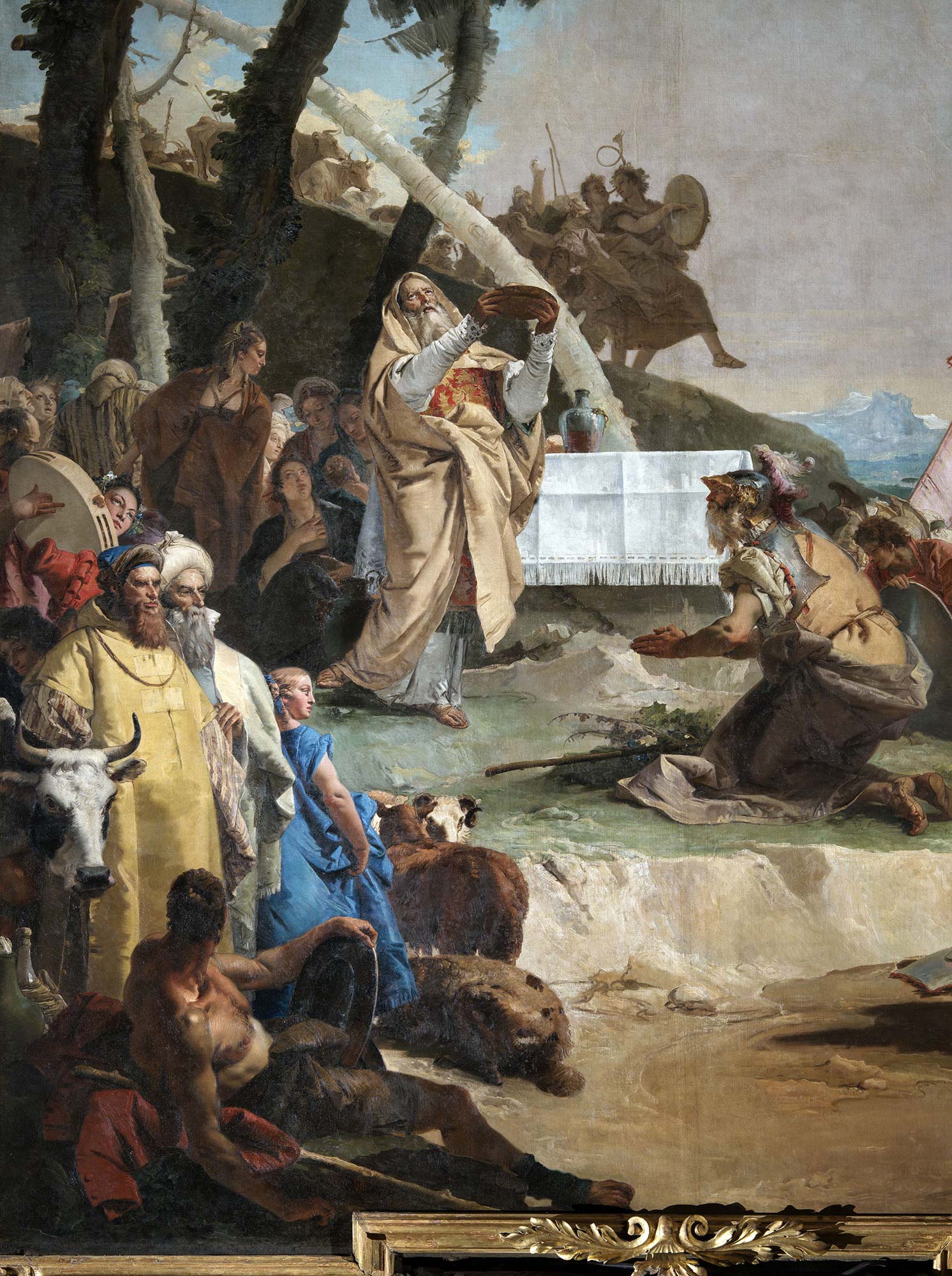 Giambattista Tiepolo, The Melchizedek
Giambattista Tiepolo, The MelchizedekTiepolo decomposed
From Feb. 26 until the end of May, Verolanuova hosts Tiepolo Scomposto a calendar with some 30 initiatives inspired by the two magnificent canvases, along a lively, itinerant route for a program strongly desired by the municipal administration, with art and multimedia installations, avant-garde theater, performances and street art, to underscore the strong ties of more than a century that unite the community of Verolanuova and Giambattista Tiepolo.
The way of the Tiepolos in the provinces of Brescia and Bergamo
La via dei Tiepolo in the provinces of Brescia and Bergamo proposes itineraries in the places that preserve works by Giambattista and Giandomenico Tiepolo, starting right from the Basilica of San Lorenzo in Verolanuova and then continuing in the province of Brescia to the Diocesan Museum and the Basilica of San Faustino in Brescia, the Ugo da Como Foundation in Lonato sul Garda, the Casa Museo Zani in Cellatica and the Martes Museum in Calvagese della Riviera. The Carrara Academy in Bergamo will be the first stop in the province of Bergamo on a route up to the upper city with the Cathedral of St. Alexander, the Colleoni Chapel and the Church of San Salvatore. The only detour outside the walls: the church of All Saints in Rovetta.
For information and reservations for groups and schools, contact 338.2668622 during the following hours: Tuesday and Friday from 4 to 6 p.m., Saturday and Sunday from 10 a.m. to 5 p.m;
mail: info@tiepoloverolanuova.it Website: www.tiepoloverolanuova.it Social FB @TiepoloVerolanuova | IG @tiepoloverolanuova | #tiepoloverolanova
Statements
“The restoration,” explain the restorers of Tiepolo’s canvases, “was a 12-month-long work in progress, ready to change methodologies and materials continuously in confronting the micro and macro issues that coexisted on 106 square meters of Tiepolo’s paintings. The monumental self-supporting structure set up on site allowed us to work simultaneously on the two canvases and explore, including with diagnostic investigations, a reservoir of data on Tiepolo’s technique. The one just completed was not a simple ”aesthetic“ restoration but a complex intervention, having first to deal with widespread lifting and falling in place of the pictorial material. A gradual, step-by-step reformulated cleaning in approach and mixtures has for the first time completely freed the original Tiepolesque painting - hitherto contaminated by the layering over time of varnishes, foreign materials and pictorial interventions - going so far as to recover substantial, hitherto concealed, pieces of the original pictorial film and restore chiaroscuro contrasts. The plastering filled in a myriad of gaps, with the ”plastic“ care of re-proposing the full-bodied and textural texture of the Tiepolesque brushstrokes, providing a proper basis for the subsequent intervention of pictorial integration. Conducted with minute dotted handwriting, identifiable at close range, the demanding operation restored all the lost chromatic portions, measuring the full range of Tiepolo’s palette, in order to restore an integral reading to the work. Particularly challenging because of the monumental size of the works and the unavoidable presence of the scaffolding elements, the slight final varnishing brought into play unforeseen technical virtuosity, with the aim of discreetly indulging the material and luminous variations in which Tiepolo was a master, which a thick, homologizing layer of varnish would have inevitably extinguished.”
“It has been an honor,” says art historian Davide Dotti-coordinating on a scientific and organizational level the restoration of the two spectacular Giambattista Tiepolo canvases preserved in Verolanuova, to be counted among the greatest masterpieces of not only Italian, but European, painting of the 18th century. “Seeing the bright, ringing colors typical of the brilliant Venetian master’s palette, concealed under thick layers of oxidized varnish, return to light day after day, aroused unforgettable emotions in me. The visits to the scaffolding and the hours spent ”face to face with Tiepolo,“ the constant dialogue with the restorers and the diagnostic investigations carried out allowed for a better understanding of various aspects of the extraordinary execution technique of the artist, the last of the ancient painters and the first of the moderns. For the public, climbing to a height of nine meters and admiring up close every single character of the two articulated sacred stories paged with exuberant dynamism will be a unique and unrepeatable opportunity that will allow them to create a direct dialogue with Tiepolo’s dreamlike universe, marked by the triumph of light and color that becomes the body of art.”
“Christianity, since the first centuries, has found in art an ally for the proclamation and knowledge of the faith,” recallsFr. Lucio Sala, pastor of the Basilica of San Lorenzo. “In our basilica we have an example of how authors of great value depicted moments from the life of Christ, saints or biblical characters. These include Giambattista Tiepolo, who depicted for the Blessed Sacrament chapel The Fall of the Manna and The Sacrifice of Melchizedek. We are therefore indebted to these artists, their works and the Verolians of the past, thanks to whom we can admire so much splendor. It is our duty today to care for these masterpieces even when, due to the passing of time, they manifest their fragility. This is why we have supported a restoration project that has brought the two Tiepolesque canvases to show themselves today in all their beauty and continue to fulfill their role as an illustrated Bible.”
“Art and beauty are an absolute value that any individual in the world can recognize. The restoration of the Tiepolo altarpieces,” are the words of Stefano Dotti, mayor of Verolanuova, “represents the real opportunity to enhance Verolanuova, its historical-architectural heritage, rediscovering our roots that find a great reference in the Gambara family. Verolanuova citizens consider the two large canvases an almost personal asset, of which they are extremely proud and almost jealous. With this spectacular intervention Verolanuova becomes an important cultural center hooked to the year of the Brescia-Bergamo Capital of Culture at the national level. On this occasion we can finally show everyone that living in Verolanuova and in the Brescian plain is a great opportunity, for the services present, for the many leisure time opportunities and in general for the quality of life, for which Verolanuova boasts the record at the provincial level. Thanks on behalf of all citizens to the Sponsors of this important initiative.”
“It is with true pleasure that the ABAP Superintendency for the provinces of Bergamo and Brescia,” says Angelo Loda, “has been involved from the outset in the planning of one of the most significant restoration projects for our territory in recent years, and cannot refrain from thanking all those who have contributed to the realization of this worksite.”
“The Foundation is particularly proud to have promoted this important intervention,” says Alberta Marniga, president of Fondazione della Comunità Bresciana. “Thanks to the generosity of the Fidanza Fund established at our Foundation, Tiepolo’s extraordinary works can now be admired again in all their splendor. A project that is one of the most anticipated events of Bergamo Brescia Capital of Culture 2023, whose schedule involves not only the two capitals, but also their respective provincial territories.”
“BPER Banca,” stresses Maurizio Veggio, Territorial Director of East Lombardy and Triveneto of BPER Bank, “wants to interpret to the fullest the meaning of the term ’corporate responsibility’ and is convinced that it is its duty to give back to the community part of the value it creates, supporting yes families and businesses but also investing in all areas, including the cultural and artistic, which significantly affect people’s well-being. I recall that our institution preserves and enhances a large Corporate Collection within the ”BPER Banca Gallery“ in Modena, and weaves high-profile collaborations with public and private institutions in the territories in which it operates in order to create a dialogue with the territories themselves and to stimulate reflection and sensitivity on art. Evident then, as it is in the DNA of the bank, how equally important it is to support all those entities, people, foundations aimed at enhancing those works of art that have the right to be ’seen’ and that testify to the history, art and beauty of the Italian provinces.”
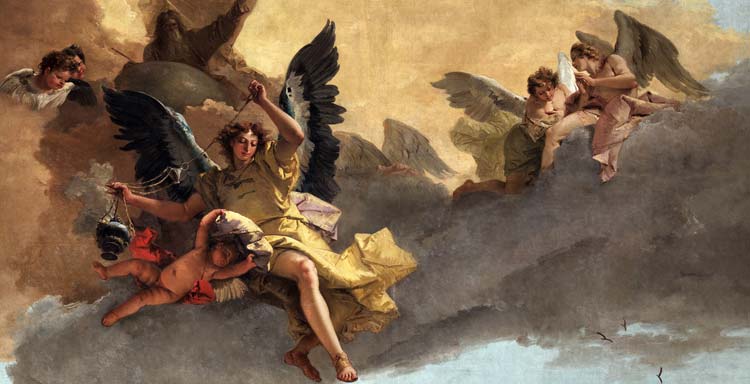 |
| Brescia, world's two largest canvases by Giambattista Tiepolo return to view |
Warning: the translation into English of the original Italian article was created using automatic tools. We undertake to review all articles, but we do not guarantee the total absence of inaccuracies in the translation due to the program. You can find the original by clicking on the ITA button. If you find any mistake,please contact us.




























